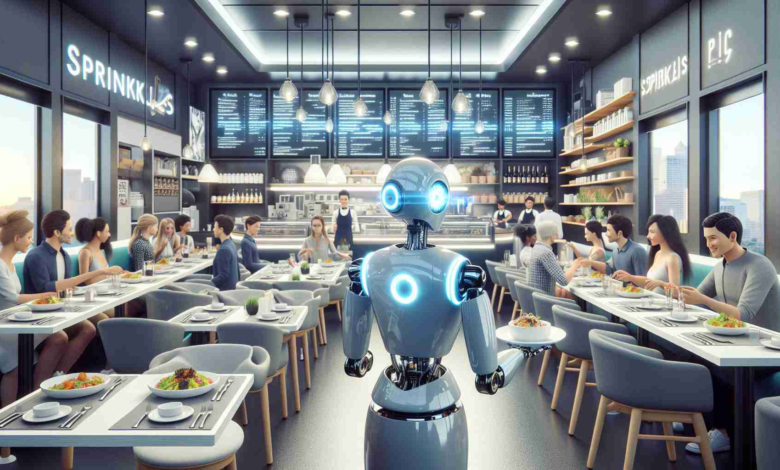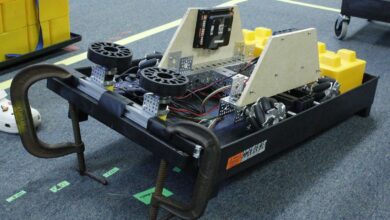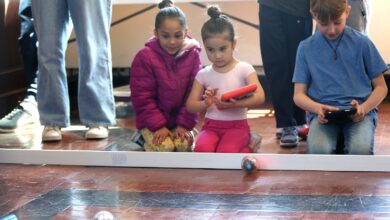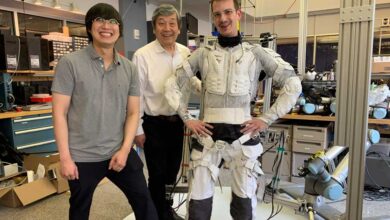Sprinkles Serves Up the Future in Virginia

Integrating Robots into the Customer Service Experience
The hospitality industry is undergoing a significant transformation with the entrance of robotic technology in customer service roles. One such instance is Evan’s Sweets in Bluefield, Virginia, where a robot named Sprinkles is serving ice cream to delighted customers. This article explores the implications of such innovations on the service industry, considers market trends, and reflects on the challenges and benefits associated with service robotics.
Sprinkles’ debut in the dessert shop illustrates a new era where businesses are looking to enhance efficiency and customer engagement through automation. Sharon Ratliff, the shop’s owner, has strategically navigated the integration of this technology, balancing the charm of her traditional business with cutting-edge advancements.
Robotic staff members like Sprinkles are not just gimmicks but part of a larger trend aiming to redefine service quality. They highlight an industry moving towards a high-tech approach to customer service that complements human labor rather than replacing it.
The broader implications of such a trend are supported by market forecasts indicating significant growth in service robotics due to advancements in AI and mechanical engineering. These innovations promise to make robots more versatile and capable of complex interactions.
However, the transition to robotic service entails substantial considerations. The potential displacement of human workers is a genuine concern, necessitating strategies for workforce development and the preservation of a human element in customer service. Businesses must balance the efficiency of robots with the personal touch that customers value.
Evan’s Sweets presents a snapshot of the future where robots make their mark on consumer experiences without eclipsing human staff. It is a testament to the potential of harmoniously blending technology with the warmth of traditional customer service. As robots like Sprinkles become more commonplace, they are sure to become beloved fixtures in industries worldwide.
For detailed analyses and more information on service robots and their growing presence in customer service, resources such as the International Federation of Robotics (ifr.org) and the Robotics Industries Association (robotics.org) offer valuable insight into industry trends. The integration of robots in businesses like Evan’s Sweets is an indicator of the evolving landscape of consumer service – a mix of tradition and technology that caters to a modern clientele.
Market Growth and Forecasts in Service Robotics
The use of robots in customer service is a burgeoning field that is gaining momentum across various sectors including hospitality, retail, healthcare, and others. The market for service robots is projected to experience robust growth. According to industry analyses, the global service robotics market is expected to expand significantly over the next decade, driven by factors such as labor shortages, increased demand for automation, and technological innovations making robots more adept at tasks that require finesse and social interaction.
Challenges and Issues in the Integration of Service Robots
The integration of robots like Sprinkles into customer service roles brings with it distinct challenges. Ethical considerations, such as the employment implications for human workers, are critical. Concerns over privacy and data security also arise as robots collect and process customer information. Moreover, ensuring reliability and safety in human-robot interactions is paramount to gaining public trust.
There is the issue of public perception—while some consumers might embrace the novelty and efficiency of robotic service, others could perceive a loss of personal touch or become frustrated with the limits of programmed interactions. The industry must navigate these hurdles wisely, ensuring that the deployment of robots enhances rather than detracts from the consumer experience.
On a technical level, sustained investment in research and development is essential to overcome current limitations in robot functionality and to enhance their problem-solving capabilities, adaptability, and ability to understand and process human emotions.
Economic Implications and the Future of Service Robotics
The economic impact of service robots is multifaceted. On one hand, they could significantly reduce labor costs, enhance operational efficiency, and create new market opportunities. On the other hand, they might disrupt the job market, particularly in sectors with high reliance on routine, manual tasks.
The future of customer service robots like Sprinkles seems promising, as they evolve to offer a more personalized and interactive experience. The continued success of these robots will depend on developers’ ability to refine AI and robotics technology to deliver services that meet or exceed those offered by humans.
For further research on the advancements of service robots and how they are shaping various industries, visiting reputable sources such as the International Federation of Robotics and the Robotics Industries Association will provide in-depth information and statistics that are essential to understanding the trajectory and impact of these technologies.
The story of Evan’s Sweets integrating robots like Sprinkles signals a larger move towards automation in customer service. Companies considering this evolution will find that maintaining a balance between technological innovation and preserving the irreplaceable human element of customer interactions will be key to success in this new technological era.

Roman Perkowski is a distinguished name in the field of space exploration technology, specifically known for his work on propulsion systems for interplanetary travel. His innovative research and designs have been crucial in advancing the efficiency and reliability of spacecraft engines. Perkowski’s contributions are particularly significant in the development of sustainable and powerful propulsion methods, which are vital for long-duration space missions. His work not only pushes the boundaries of current space travel capabilities but also inspires future generations of scientists and engineers in the quest to explore the far reaches of our solar system and beyond.



